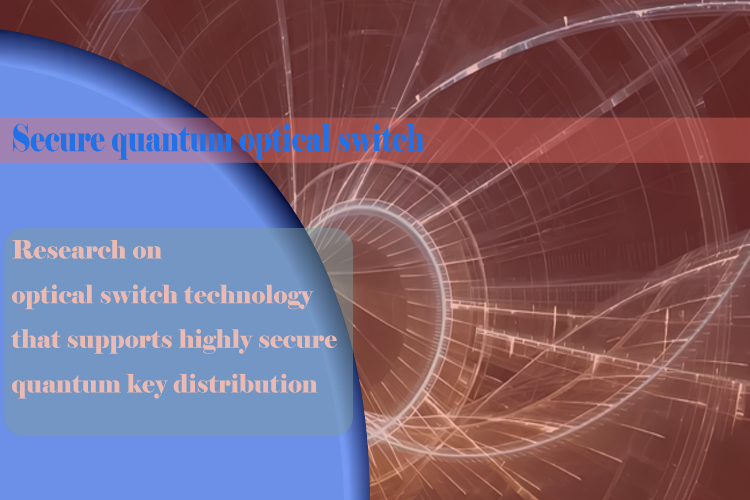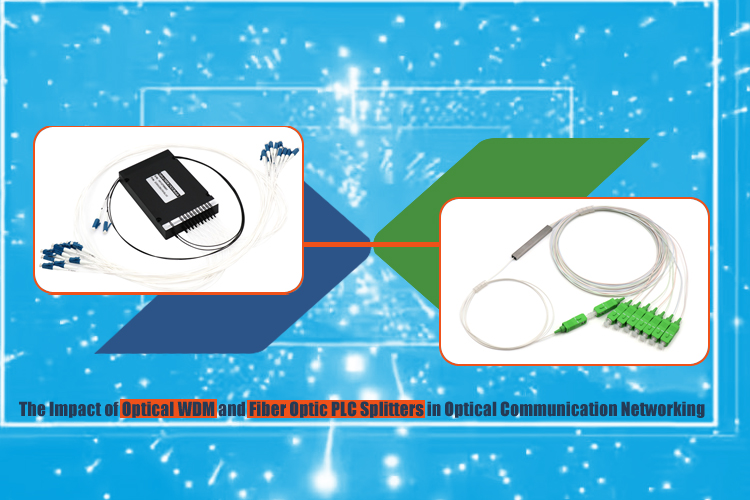Secure quantum optical switch:
Research on optical switch technology that supports highly secure quantum key distribution
Introduction
Quantum key distribution (QKD) has emerged as a promising technology for secure communication in the era of increasing cyber threats. To ensure the utmost security, researchers have turned their attention to developing a secure quantum optical switch. This innovative technology aims to enhance the efficiency and reliability of quantum key distribution systems, enabling secure communication channels for various applications.

Understanding Quantum Key Distribution (QKD) Quantum key distribution is a cryptographic protocol that utilizes the principles of quantum mechanics to establish secure keys between two parties. Unlike conventional encryption methods, QKD relies on the fundamental properties of quantum mechanics, such as the uncertainty principle and the no-cloning theorem, to ensure the security of the key exchange process. However, the implementation of QKD requires advanced technologies, including a secure quantum optical switch.
The Need for a Secure Quantum Optical Switch While QKD holds immense potential for secure communication, the existing optical switches used in QKD systems face several challenges. These switches often introduce vulnerabilities, such as potential eavesdropping and interception of quantum signals, compromising the security of the communication channel. To address these issues, extensive research is being conducted to develop a secure quantum optical switch that can support highly secure quantum key distribution.
Research Progress in Secure Quantum Optical Switches Researchers have made significant progress in developing secure quantum optical switches that can overcome the limitations of traditional switches. These switches are designed to handle quantum signals without compromising their security. By utilizing advanced techniques, such as single-photon detection and quantum state manipulation, these switches ensure the protection of quantum signals from potential adversaries.
Advantages and Applications of Secure Quantum Optical Switches Secure quantum optical switches offer numerous advantages over conventional switches. They provide a high level of security by reliably transmitting quantum signals without compromising their integrity. These switches can be integrated into existing communication networks, enabling secure communication channels for various applications, such as government agencies, financial institutions, and healthcare organizations. Additionally, secure quantum optical switches have the potential to revolutionize fields like quantum computing and quantum internet.
Challenges and Future Directions Despite the advancements in secure quantum optical switch technology, there are still challenges that need to be addressed. The scalability and compatibility of these switches with existing infrastructure pose significant hurdles. However, ongoing research aims to overcome these challenges by developing more efficient and practical solutions. Future directions include the development of compact and cost-effective switches that can be easily integrated into commercial QKD systems.
Conclusion
The development of a secure quantum optical switch is an essential step towards enhancing the security and reliability of quantum key distribution systems. These switches enable secure communication channels by protecting the integrity of quantum signals, making them virtually immune to interception and eavesdropping. With continued research and technological advancements, secure quantum optical switches have the potential to revolutionize secure communication and pave the way for the future of quantum cryptography.
FAQs:
Q1. How does a secure quantum optical switch enhance the security of quantum key distribution? A1. A secure quantum optical switch ensures the integrity and confidentiality of quantum signals by preventing eavesdropping and interception. It utilizes advanced techniques, such as single-photon detection and quantum state manipulation, to protect the quantum communication channel from potential adversaries.
Q2. Can secure quantum optical switches be integrated into existing communication networks? A2. Yes, secure quantum optical switches can be seamlessly integrated into existing communication networks. This integration enables the establishment of secure communication channels for various applications, including government agencies, financial institutions, and healthcare organizations.
Q3. What are the advantages of using secure quantum optical switches? A3. Secure quantum optical switches provide a high level of security by reliably transmitting quantum signals without compromising their integrity. They offer enhanced protection against eavesdropping and interception, making them ideal for secure communication applications.
Q4. Are there any challenges in implementing secure quantum optical switches? A4. Yes, there are challenges in implementing secure quantum optical switches, such as scalability and compatibility with existing infrastructure. However, ongoing research aims to address these challenges by developing more efficient and practical solutions.
Q5. How will secure quantum optical switches impact the future of secure communication? A5. Secure quantum optical switches have the potential to revolutionize secure communication by providing highly secure communication channels. They pave the way for advancements in fields like quantum computing and quantum internet, opening up new possibilities for secure communication in the future.
Keywords: quantum key distribution, secure communication, quantum optical switch, cryptography, eavesdropping, interception, quantum signals, single-photon detection, quantum state manipulation, secure communication channels.

 The Impact of Optical WDM and Fiber Optic PLC Splitters in Optical Communication Networking
The Impact of Optical WDM and Fiber Optic PLC Splitters in Optical Communication Networking
 Unlocking the Future: How 5G Powers the Development of Emerging Technologies
Unlocking the Future: How 5G Powers the Development of Emerging Technologies
 The Future of Fiber Optic Communication Network Architecture: Evolution and the Role of SDON Technology
The Future of Fiber Optic Communication Network Architecture: Evolution and the Role of SDON Technology
 What opportunities and challenges does free-space optical communication technology face?
What opportunities and challenges does free-space optical communication technology face?